Cleaners min. Soviet mine trawls 1932-1945 (part of 3)
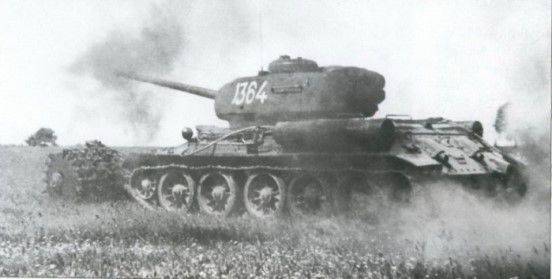
Part Three Trawls in battle
The PT-3 was first tested at the front in the fall of 1942 as part of the 40th Tank Regiment (Yu. Veremeev). In April 1943, a separate tank a company equipped with trawls took part in the battles on the Voronezh Front in the area of the Kursk ledge (Pavlov M., Zheltov I.).
More information we learn on the site "Tank T-34. Virtual Museum. It says (unfortunately, without indicating the source) that the first modified mine trawls, created by the plant of the People's Commissariat of Communications in Tula, were tested in May 1942, and in August of the same year, the first two experimental tanks were baptized near Voronezh PT-34 from the 233-second tank battalion of the 86-second tank brigade. PT-34 also participated in the famous battle on the Volga: “Thirty-fours” with mine sweeps from the 109 Tank Brigade participated in a counter-offensive in November 1942 on the Don front near Stalingrad. Technical problems with the first trawls, as well as the lack of tactics for the use of new technology, greatly delayed its use in combat units. In April and May, the 1943 of the PT-34 was used only on the Caucasian front to attack heavily fortified positions of the German forces.
Regarding the issue of the first mass combat use of the PT-3 trawls in combat: it remains controversial. Some researchers (Y. Veremeev, M. Pavlov, I. Zheltov) indicate that the PT-3 trawls were first used in July by the 1943 during the battle of Kursk in the 16 action strip on the Voronezh (according to other data) front - two tank regiments with trawls: 40 and 166. But the problem is that there was no 16A near Kursk - neither a combined arms nor a tank one. Also, under the Kursk there could not be two regiments with trawls (see below).
Wikipedia gives the following information: “The first subdivision of tank-sweepers (a separate tank company subordinated to engineering management) passed combat tests on the Central Front in the 6 Army's band in May 1943. served P. Mugalev), regularly equipped with trawls PT-40, completed the formation in July 166, and received a baptism of fire during the attack on the Kursk Bulge ”. But even here the problem is that there was no 3 army on the Central Front, there were 1943 units and 6 units (60 units were sent out on the Voronezh Front).
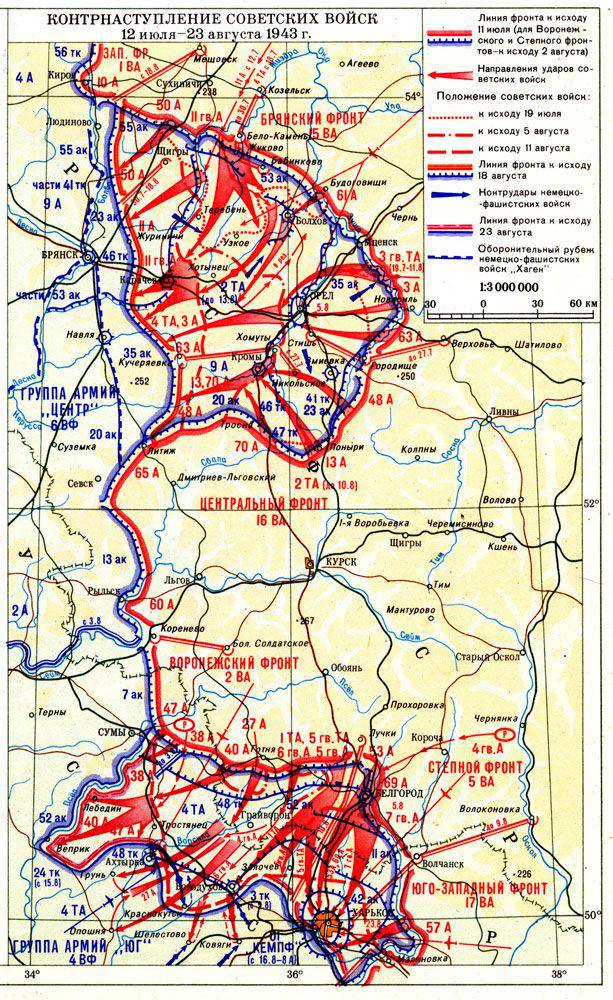
The site "Tank Front" (http://www.tankfront.ru/ussr/tp/tp166i.html) indicated that the 166 th regiment did not participate in the battles near Kursk. From January to October, the 1943 regiment was on the side opposite to the front.
Weak confirmation of this is found on the aforementioned site “T-34 Tank. Virtual Museum ”, where it is said that the 166-th separate engineering tank regiment was in the reserve of the High Command and was intended to break through the enemy defense during the battle of Kursk. But nothing is said about its use under Kursk.
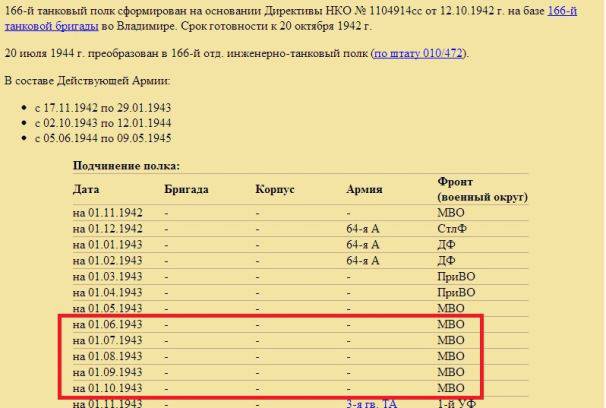
But 40 th regiment under. Kursk was - as part of the 65 Army of the Central Front.
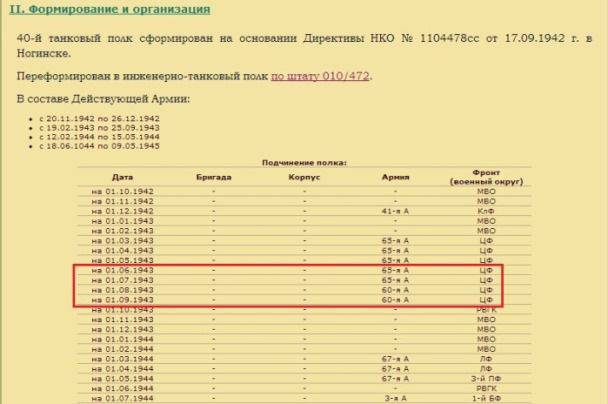
Other researchers (A. Vinogradov, A. Makarenko, A. Tsirlin, etc.) indicate that for the first time, mine trawls were used during the liberation of Kiev in the fall of 1943 by the 166 tank-regiment in the 5 Guards Tank Corps actions .
The author supports the first group of researchers. There are two reasons for this. The first. It was noted above that in March 1943 the launch of the PT-3 trawls had already begun. The second. The author managed to find the “Instructions for the organization of the passage of tanks through barriers in the offensive” from 30 in May 1943, approved by the head of the engineering troops of the Bryansk Front, Colonel Slachevsky So, in this "Instructions ..." on the use of trawls referred to as the already known type of weapons. Thus, in part one of the “Arrangement of aisles in the barriers” in Section 3, “the ways of arranging the aisles in anti-tank minefields can be as follows: a) manually clearing mines ...; b) mines are trawling by trawls that are attached to tanks. ” In the second part of the “Sequence of actions” in p. 3. it is said that “for 2 — 3 of the day or the night before the offensive, sappers will equip passages in the enemy's barriers. If it is impossible to make the passes completely (the proximity of the minefields from the enemy’s firing points or a powerful and destructive fire), then the device of the passes is made by artillery or the equipment of the passes is used by the trawls at the moment of the attack. ”
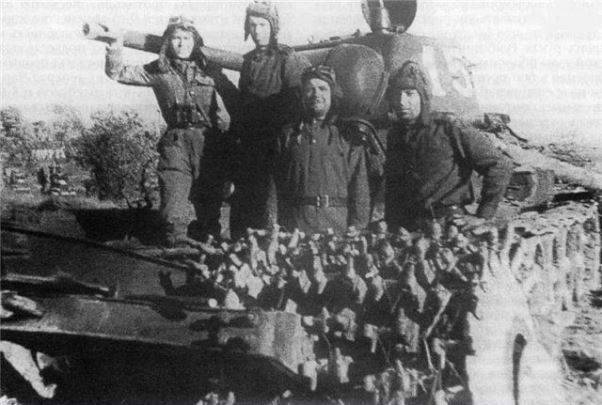
In the light of the above, it can be argued that there was only one, 40, an engineering-tank regiment (ITP) with trawls PT-3 near Kursk. It is only necessary to finally clarify in the band which particular divisions or brigades from the 65 A squadron used the trawls for the first time. As for fronts, there is a photo (see a little below) from the book by M. Baryatinsky “T-34 in battle”, which is signed “T-34 tanks, equipped with PT-3 mine trawls. Kharkiv direction, 1943 year ". The Kharkov area is the Voronezh Front, and the 40 ITP was on the Central. As an option - the regiment was transferred from one site to another. But there is no exact data about it.
So, the question of where, when and how many PT-3 trawls were used in the battles in the summer of 1943 requires further clarification.
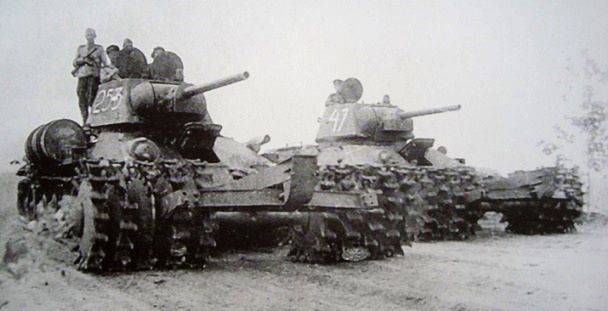
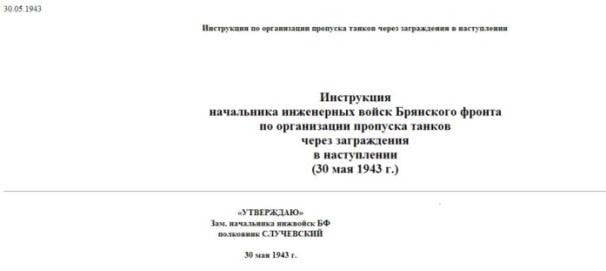
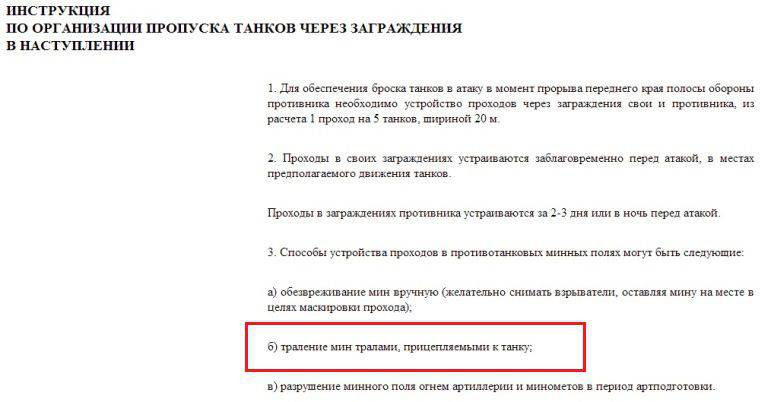
From August 1943, tank trawls began to be produced en masse, not only at the 183 plant, but also at the Krasny Sormov and Chelyabinsk Plant.
Using the experience of using the PT-3 mine trawls near Kursk and during the liberation of Kiev, in the spring of 1944, five motorized engineering and sapper brigades (1, 2, 4, 10 and 2 Guards) were created, which included one tank regiment with anti-mine trawls PT-3. According to staff No. 010 / 472, such a regiment had 22 tanks T-34, 18 mine trawls, 272 man and 62 vehicles. The regiment's engineer - tank company was statewide - 30 man and 7 T-34 tanks, of which 6 was equipped with a PT-3 trawl (two 3 platoons with a trawl).
On a wider scale, the PT-3 mine trawls were used in 1944 during the liberation of Belarus - four separate engineering-tank regiments took part in Operation Bagration: 148 and 253 were part of the 3 of the Belarusian Front, 119 th and 166 th regiments - in the composition of the 1 of the Belarusian Front.
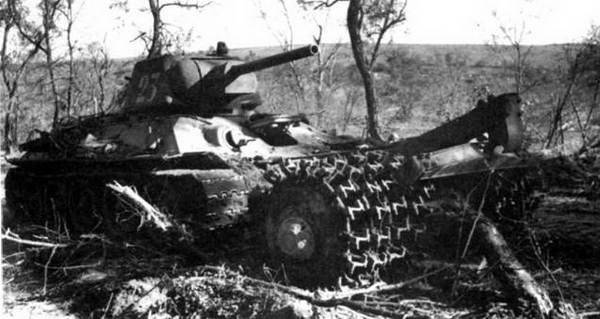
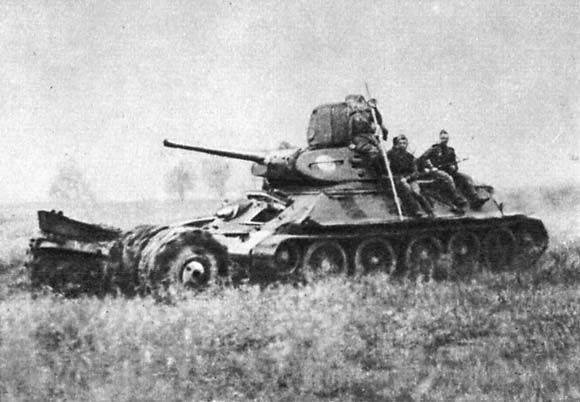
New weapon strongly surprised and scared the Nazis. After the first use of these trawls in Berlin, the Russians reported on the use of new tanks that are not sensitive to mines. The well-known German tank designer G. Knipkamp flew specially to the front, personally observed the attack and saw that mines burst under Russian tanks, while they continued to move. This forced the Germans to continue work on their own trawls (rutted trawl with a B-IV teletpanel, minesweeper Raumer-S).
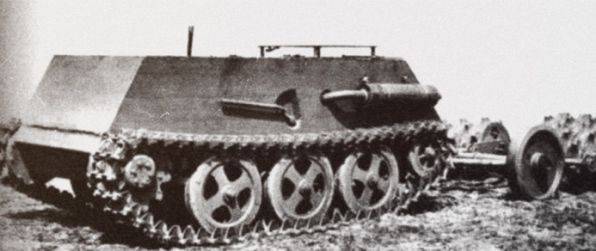
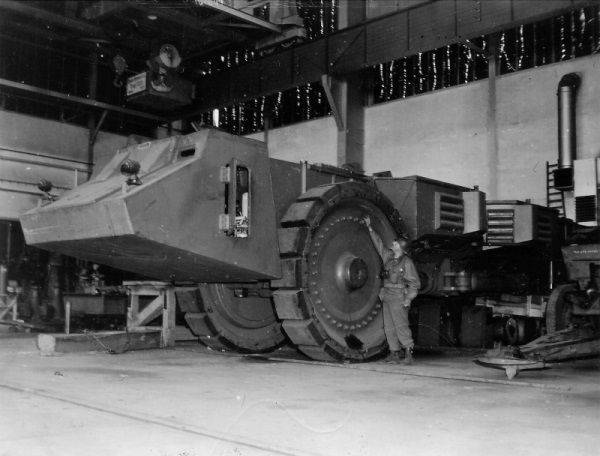
Evaluated the effectiveness of the actions of these special machines and the Soviet commanders, and in every way tried to protect them. For example, you can move a passage from the "Instructions ..." of the commander of the 4 th assault engineering and sapper brigade from 27 September 1944 about the equipment and actions of the assault groups. The paragraph “Arrangement of aisles in minefields and wire obstacles” said: “During the arrangement of aisles in minefields with minesweeper tanks, use them at maximum speeds. Tank platoon disengagement is not allowed. Linear tanks or self-propelled artillery units must move behind the trawling tanks to cover them. ”
Despite some shortcomings, the PT-3 trawl showed its reliability and efficiency. Trawls of this type have been recommended for use with HF and IS tanks. Best for this, according to the Main Armored Directorate, was a heavy KV-1С tank, which had an eight-speed gearbox (four-speed in the T-34), which provided better mobility and ease of control of a mine-trawling tank. In addition, the KV-1C had a stronger body, and its gun did not go beyond the dimensions of the body, which excluded its damage during the detonation of a mine. For these tanks, the PT-1945M or PT-M trawl was developed by the end of 3 (the mine trawl was modernized). As a result of completion of the trawl, the carrying A-frame was excluded from its design, the central beam was strengthened, the traverse design was changed. In 1944 - 45 the trawl was installed on all major Soviet tanks - T-34-85, EC-2, EC-3, T-44. However, it soon became clear that the trawl, although it allowed for firing from a tank gun, there is a small sector of fire in front, in which tankers were still forced to raise gun barrels to the maximum angle to protect them from being hit by shrapnel from a mine blown up by a trawl. Therefore, it was recommended that the PT-3M (PT-M) mine trawl under combat conditions with the EC-2, EC-3, T-44 and T-34-85 tanks should not be used.
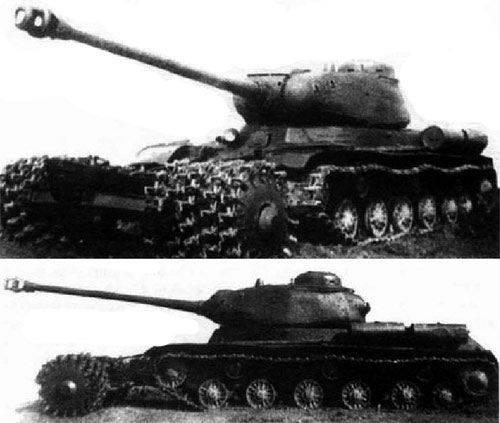
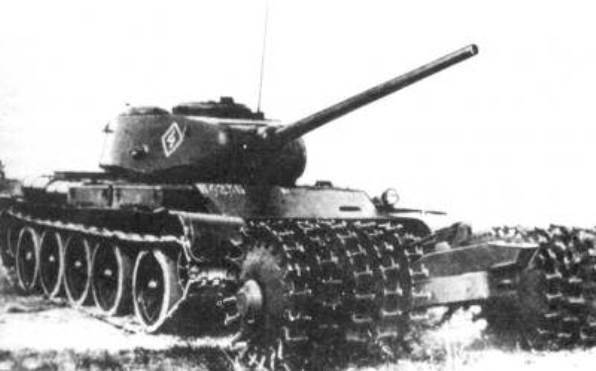
In addition to the PT-3 mine trawls, during the war years other trawl designs were developed and tested. One of them is an experimental model of an “explosive trawl”. It was a special cassette with 10 charges of 5 kg each. During the movement of the tank, the charges were thrown out of the cassette on the minefield in turn, at a certain interval and exploded, forming a passage. Thus, during the war years, the USSR invented another new type of weapon, the demining plant.
The Soviet Union, one of the first to begin work on the creation of mine trawls, during the Great Patriotic War, developed and effectively used one of the best mine trawls of the time - PT-3. The design was so successful that today it continues to be used on the modern heirs of the PT-3 - the KMT-5 and KMT-7 track minesweepers. The design of the latter at one time was successfully copied by the Israelis, and at the beginning of the XXI century. and the Americans.
In conclusion - a few photos.
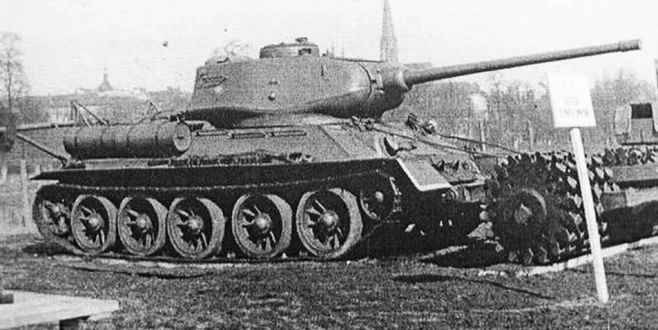
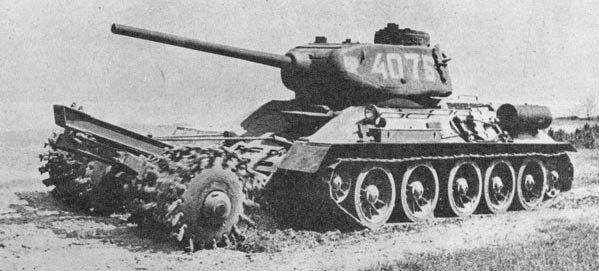
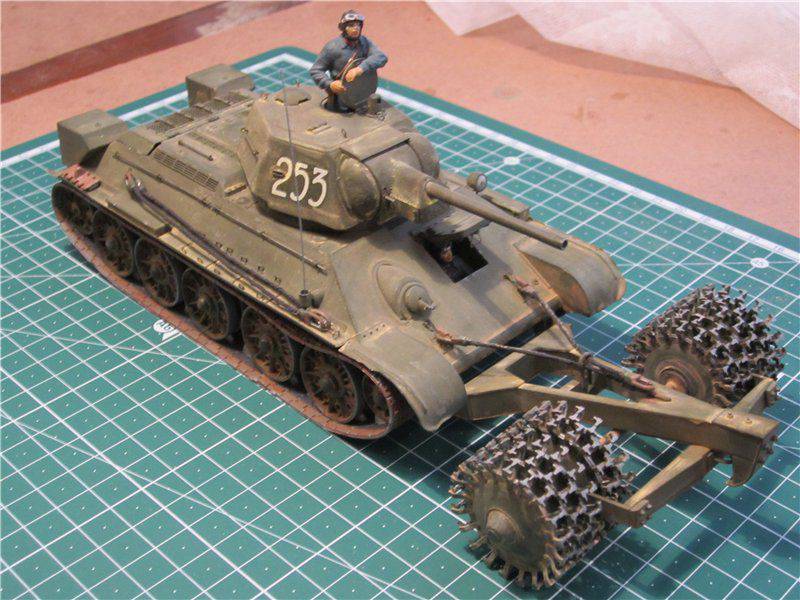
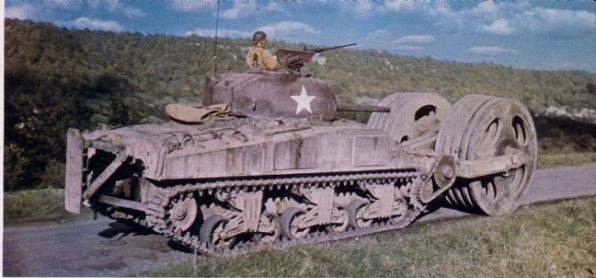
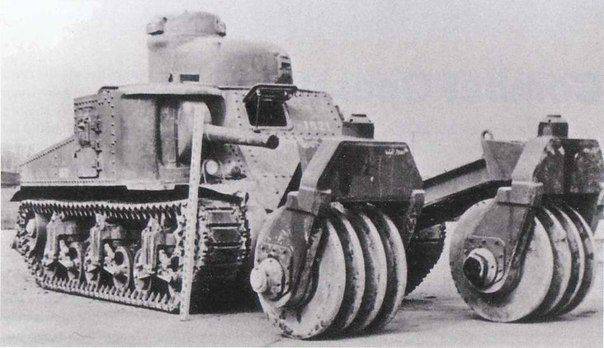
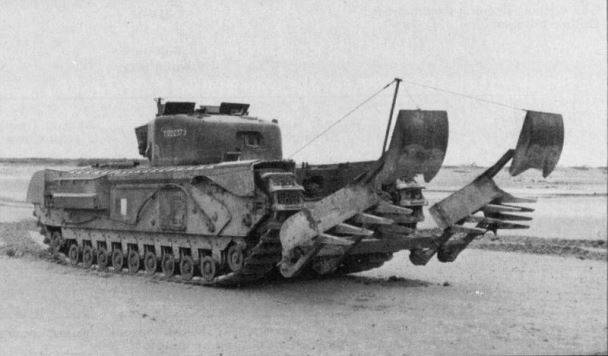
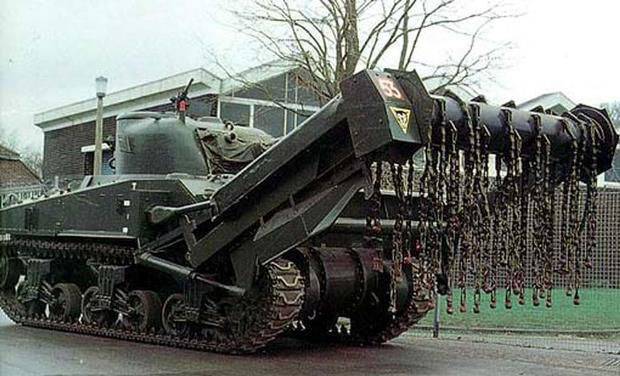
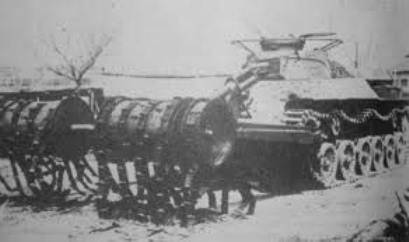
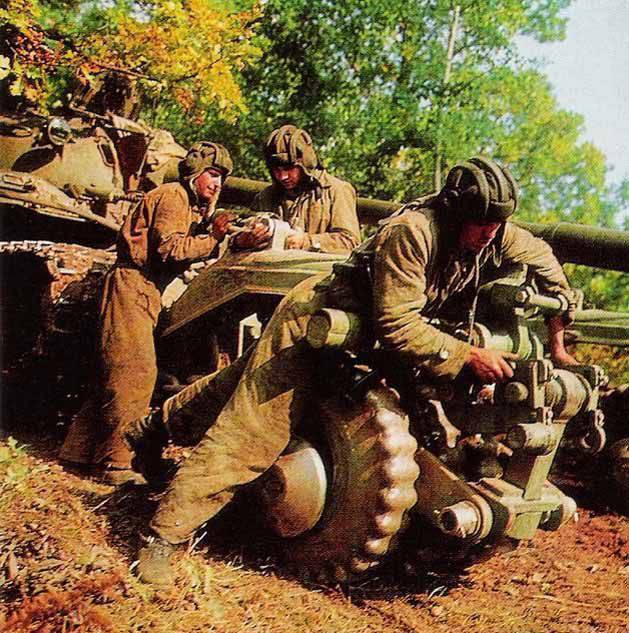
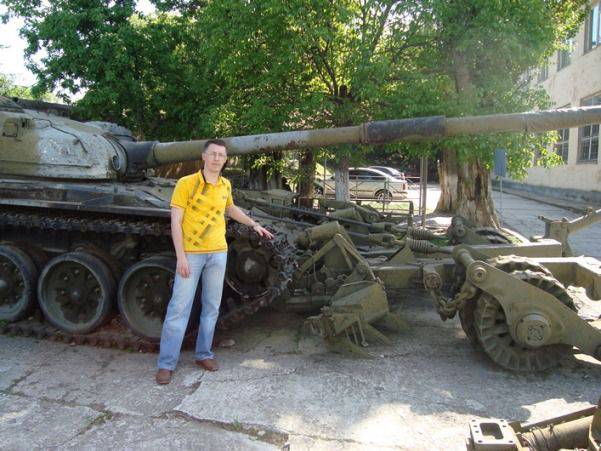
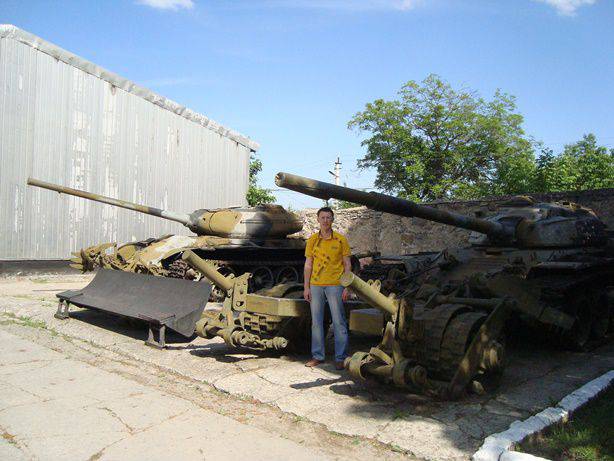
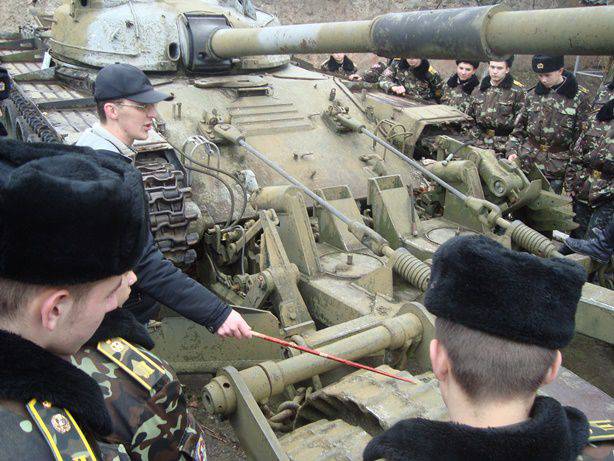
Sources:
1. Collection of military documents of the Great Patriotic War. 18 release. M .: Military Publishing House of the Ministry of the Soviet Union, 1953. C. 40.
2. Collection of military documents of the Great Patriotic War. 3 release. M .: Military Publishing House of the Ministry of the Soviet Union, 1947. C.33.
3. Guide to military engineering. M .: Military Publishing House of the Ministry of the Soviet Union, 1953. 678 with.
4. Roller mine trawls // http: // tanki-su.narod.ru/ mashinyi-razgrazhdeniya / katkovyie-minnyie-tralyi.html.
5. Machines and equipment for overcoming mine-explosive barriers // Engineering weapons machines: In 4 h. Part 3. Machines for conducting engineering reconnaissance, overcoming and device mine blast barriers. M .: Military Publishing House, 1987. 424 with.
6. Domestic armored vehicles. The twentieth century: Scientific publication: In 4 t. / Solyankin A.G., Pavlov G.V., Pavlov I.V., Zheltov I.G. / Volume 1. Domestic armored vehicles. 1905 — 1941 M .: Exprint Publishing Center LLC, 2002. 344 with.
7. Engineering troops in battles for the Soviet family / A.D. Tsirlin, PI Biryukov, V.P. Istomin M .: Lenizdat, 1970. 422 with.
8. History art of war: A textbook for military academies of the Soviet armed forces / B.V. Panov, V.N. Kiselev et al. M .: Voenizdat, 1984. 535 with.
9. Mikhailov V.I. Long way with trawl. Chelyabinsk: South Ural book publishing house, 2005. 142 with.
10. PT-3 - Katkov mine trawl // http: // russianarms.mybb.ru/viewtopic.php?id=1158.
11. Nikiforov N. The Assault Brigades of the Red Army / N. Nikiforov. Moscow: Yauza, Eksmo, 2008. 156 with.
12. Vinogradov A.V., Makarenko A.S. History of the creation and development of domestic mine trawls // Technique and armament. 2012. No.1 — 4.
13. http://ser-sarajkin.narod2.ru/ALL_OUT/TiVOut10/SuPzTrl/SuPzTrl005.htm.
14.http: //mreadz.com/new/index.php?id=276168&pages=32.
15. http://forum.faleristika.info/viewtopic.php?f=634&p=1713288&sid=0eb209200b0c4adc611eddd360d157ce.
16. http://tank-t-34.blogspot.com/2010/05/34_23.html.
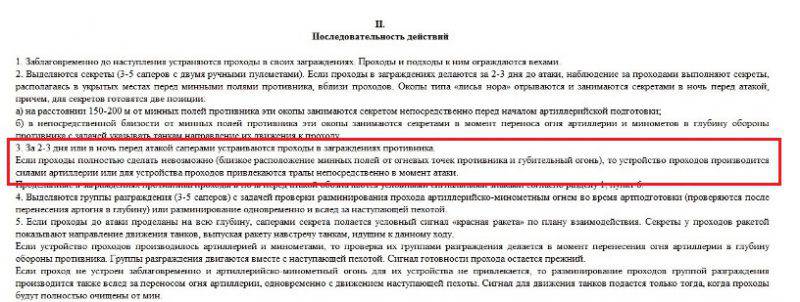
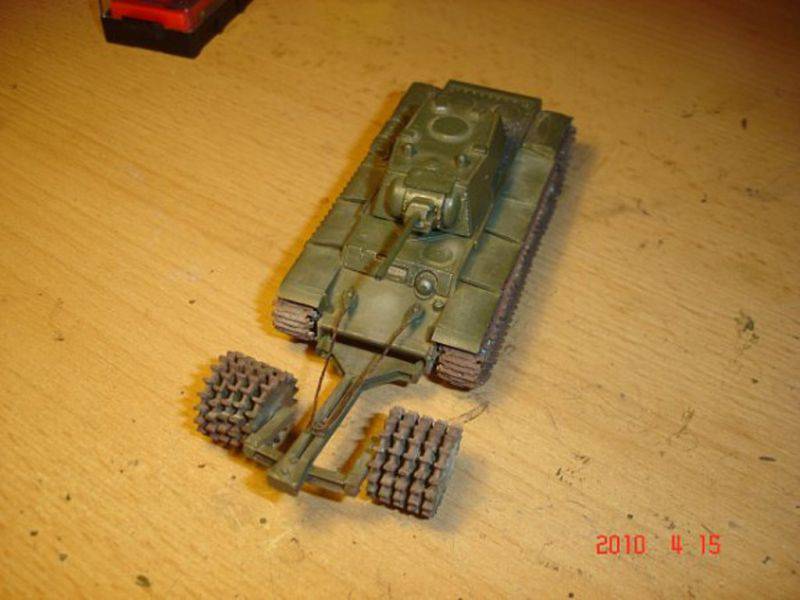
Information